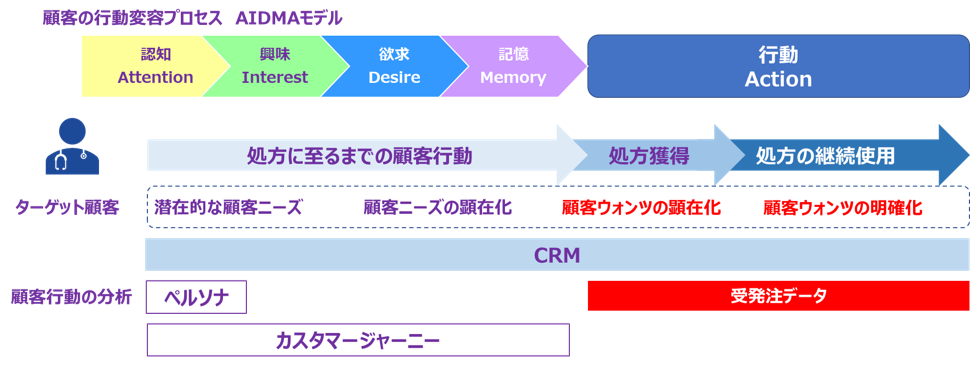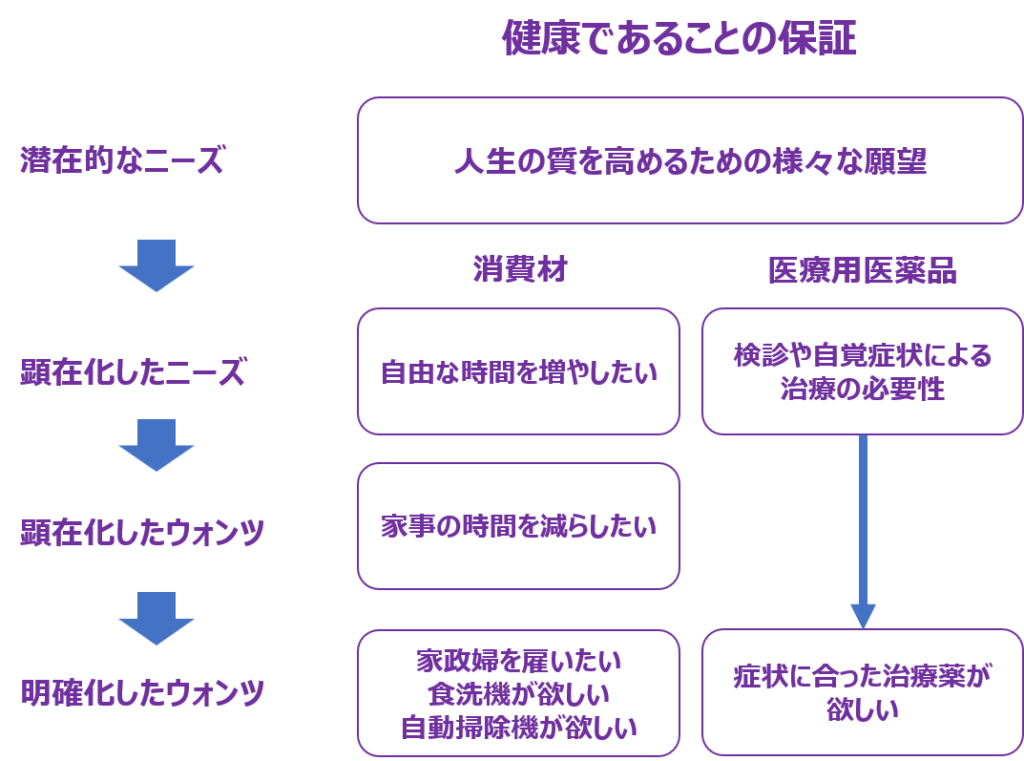

世界的な消費財メーカーであるP&G(プロクター・アンド・ギャンブル)は、さまざまな製品を提供しており、P&Gのビジネスモデルはマーケティングのお手本的な存在です。
そのため、医療用医薬品ビジネスの場においてもロールモデルとして取り入れている製薬企業が数多くあります。
ではP&Gのビジネスモデルは医療用医薬品ビジネスの場においてロールモデルとして機能するのでしょうか?
顧客の消費欲求は健康であることを前提として、人生の質を高めるための様々な願望から発生しています。
そのため非常に漠然として曖昧であり、これが「顧客は本当に欲しい物を知らない」理由です。
欲求の曖昧さから、既に物質的には満たされていても、精神的な満足度は不十分なため、消費者は消費行動をし続けることになります。
一方で医療用医薬品ビジネスにおいても、健康であることを前提としていることに変わりはありませんが、治療という顕在化したニーズのためウォンツも明確です。
病気が治れば、症状がなくなれば欲求は満たされ、消費行動は終わります。
これらが、私が医療用医薬品ビジネスには特化型のビジネスモデルが必要だと考える理由です。
マトリクス分析法は顕在化した医薬品ウォンツである受発注データを基に戦略を定量化および可視化します。
#4 “Customers don’t really know what they want”
P&G (Procter & Gamble), a global consumer goods manufacturer, offers various products, and its business model is a textbook example of marketing. Therefore, many pharmaceutical companies also incorporate it as a role model in the medical pharmaceutical business.
So, does P&G’s business model work as a role model in the medical pharmaceutical business?
Consumer desires are generated from various wishes to improve the quality of life, assuming that they are healthy. Therefore, they are very vague and this is why “customers don’t really know what they want.”
Due to the ambiguity of desires, consumers continue to consume even if they are already materially satisfied but have insufficient mental satisfaction.
On the other hand, in the medical pharmaceutical business, while assuming that they are healthy, the wants are clear due to the manifested need for treatment.
If the illness is cured or the symptoms disappear, the desire is satisfied, and consumption behavior ends.
These are the reasons why I believe that a specialized business model is needed for the medical pharmaceutical business.
Matrix analysis quantifies and visualizes strategies based on order and receipt data, which are manifested pharmaceutical wants.

